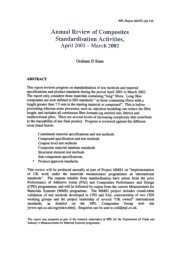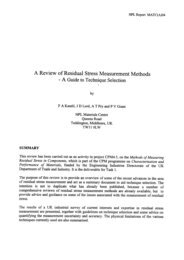Dimensional Measurement using Vision Systems - NPL Publications ...
Dimensional Measurement using Vision Systems - NPL Publications ...
Dimensional Measurement using Vision Systems - NPL Publications ...
Create successful ePaper yourself
Turn your PDF publications into a flip-book with our unique Google optimized e-Paper software.
<strong>Measurement</strong> Good Practice Guide No. 39<br />
2.2.4 Curvature of field<br />
Field curvature in an objective causes a plane object to be imaged on a curved surface.<br />
Thus the whole field of view of the objective will not be sharply defined at one focus<br />
setting; however, provided the objective is free from other off-axis aberrations, the whole<br />
field can be critically examined by making slight changes in the focus setting.<br />
Image distortion i.e. a gradual change in magnification from the centre to edge of the<br />
image field causes a square object to be imaged with the characteristic 'barrel' or<br />
'pincushion' shape. Microscope objectives commonly exhibit some distortion (typically of<br />
the order of one percent), but this may not be apparent in the observation of many types of<br />
object. However, if dimensional measurements are to be made directly from the<br />
microscope image and over a large field of view, the performance of the objective and<br />
eyepiece system should be checked in this respect <strong>using</strong> a stage micrometer or other type<br />
of graticule.<br />
2.3 OPTICAL COMPONENTS OF THE MICROSCOPE<br />
In very basic terms, the optical system of a microscope consists of an objective forming the<br />
primary image of the object and an eyepiece producing a secondary virtual image, which<br />
is then viewed by the eye (see Figure 6). For relaxed viewing, the foc<strong>using</strong> may be<br />
adjusted so that the virtual image is effectively at infinity. The condenser illuminates the<br />
object, with the objective itself acting as condenser in most reflected light microscopy.<br />
Microscope manufacturers produce several different types of each of these components<br />
and it is therefore useful to summarise their respective properties.<br />
2.4 THE MICROSCOPE OBJECTIVE<br />
The microscope objective is the most critical component of the optical system. Ideally this<br />
lens should produce a well-defined image with any residual spherical aberration, coma<br />
and astigmatism minimised to ensure that it is capable of resolving the theoretical limit<br />
discussed in section 2.1. In addition, the image should be substantially free from curvature<br />
of field and distortion and with excellent colour correction to allow a wide illumination<br />
bandwidth to be used. Microscope objectives are generally classified according to their<br />
colour correction with an additional reference if they are of the flat field variety. The<br />
complexity of the objective i.e. the number of component lenses it contains increases with<br />
its numerical aperture and with the overall state of correction required; a high power dry<br />
objective may contain ten or more component lenses in order to achieve a high degree of<br />
optical correction over a large field.<br />
9
















